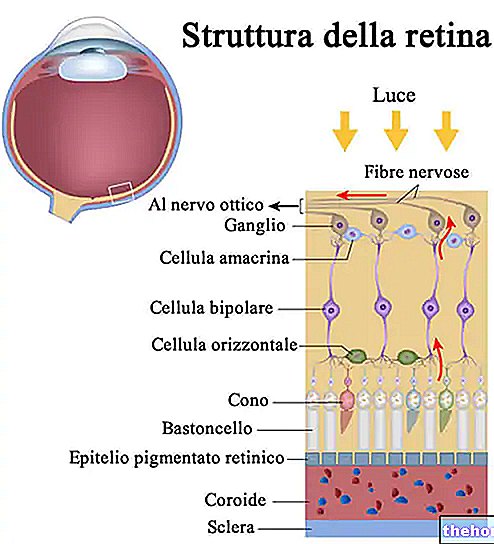Diplopia, or double vision, is a visual symptom that occurs with the simultaneous perception of two images relating to a single object. Double vision can be transient, constant or intermittent.

The diagram shows the horizontal and vertical muscles of the eyeball and their associated insertions. Diplopia is often the result of a dysfunction of these muscles. Image taken from: www.mstrust.org.uk
Single binocular vision
The ability to perceive images correctly depends on the coordination of the visual system. Many structures interact to process and interpret a light stimulus, including:
- Cornea and crystalline, at the front of the eye, act as a photographic lens helping to focus the light entering the eye;
- The retina is the photosensitive layer of tissue that lines the back of the eye and converts perceived light signals into nerve stimuli;
- The optic nerve transmits electrical signals from the retina to the brain, where the focused images are processed.
Each eye sees an object independently and vaguely different from the other eye, in relation to the different position on the frontal field. However, only one three-dimensional image is perceived since the brain is able to control the eye muscles so that they accurately focus focus on the observed object, and to process the information captured by each eye in a single image.Structural or functional problems in any component of the visual system can lead to double vision.
Causes
Double vision can be caused by several conditions. Some causes of diplopia are relatively minor, while others need urgent medical attention.




























